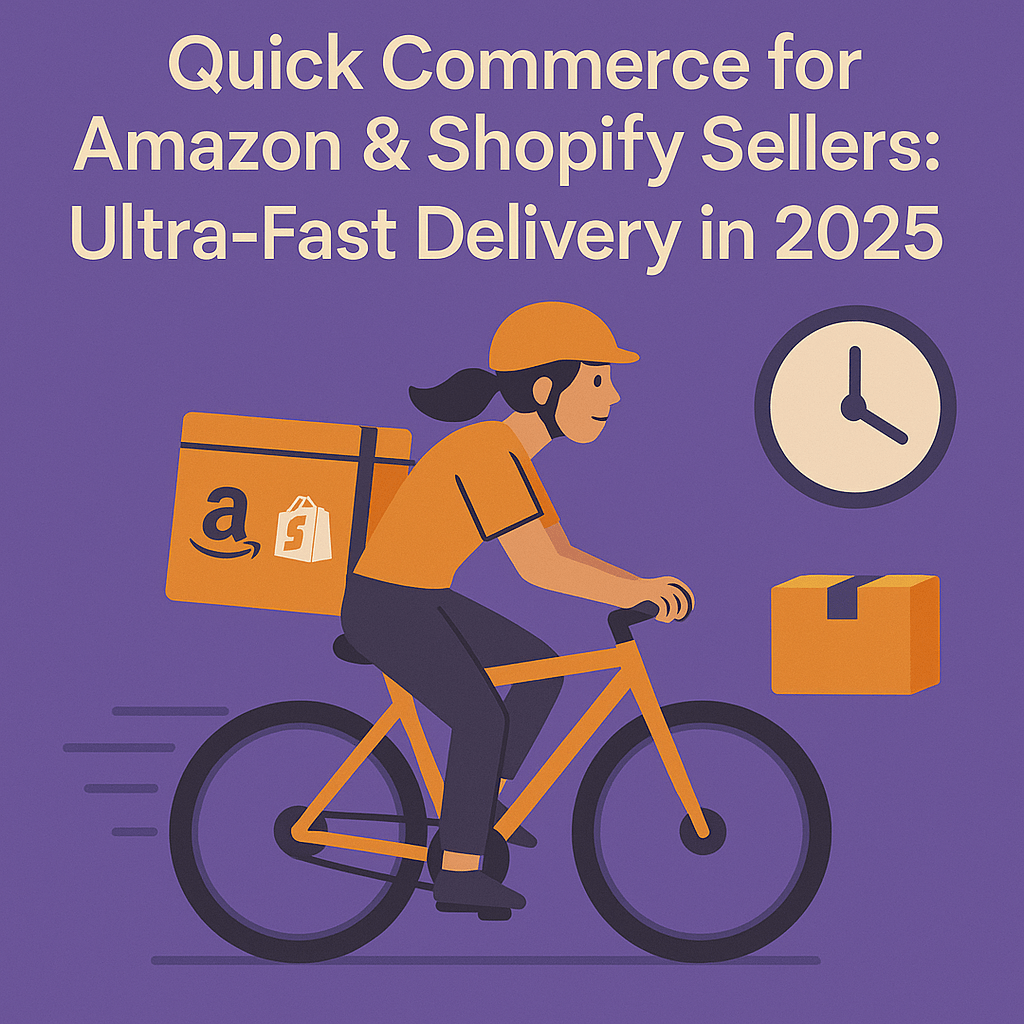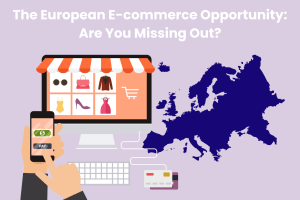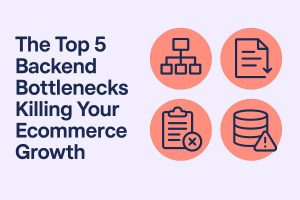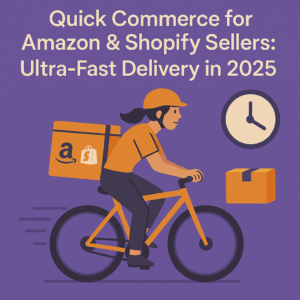What is Quick Commerce (Q-commerce) vs. Traditional E-commerce?
Quick Commerce (Q-commerce) is a new e-commerce model built around ultra-fast delivery. It promises to deliver daily essentials within minutes (often 10–30 min), rather than the days or weeks typical of standard online orders. Unlike traditional e-commerce (wide product range, centralized warehouses, 2–7 day shipping), Q-commerce uses localized micro-warehouses or “dark stores” stocked with high-demand items. These small urban hubs and real-time logistics enable the breakneck speed: orders placed on a phone can arrive almost immediately. In practice, Q-commerce targets time-pressed urban customers who value convenience over cost.
Modern Q-commerce relies on hyper-local fulfillment. Firms maintain networks of dense, city-based warehouses (dark stores) and delivery riders/vehicles to reach customers in 10–30 minutes. By contrast, a traditional e-commerce seller ships from a few large warehouses and may offer 2-day or standard shipping. Q-commerce’s local approach – closer stock and smarter routing – meets today’s consumer demand for “on-demand” shopping.
Key Quick-Commerce Trends in 2025
- Explosive market growth: The Q-commerce market is forecast to skyrocket. Industry analysts predict it will grow from roughly $75–80 billion in 2023 to over $580 billion by 2032 (≈34% CAGR). Other estimates suggest ~$626 billion by 2033. Rapid global growth is driven by urbanization and consumer preference for instant deliveries.

- Rising customer expectations: Surveys show 86% of shoppers now view 2-day delivery as “fast” and 55% would pay extra for same-day service. Over 60% of consumers will switch retailers if slower shipping causes delays. This shift forces sellers to prioritize speed.
- Leading regions: Asia-Pacific dominates Q-commerce (about 50% market share in 2025), thanks to dense cities and rising incomes. Markets like India and China are expanding fastest (India’s Q-commerce sales are surging >75% YoY). However, North American and European retailers are investing heavily to catch up.
- Tech & logistics investment: Retailers are pouring capital into speed. For example, 64% of retailers plan to expand automated micro-fulfillment centers for ultra-fast shipping. Amazon is opening 100+ same-day delivery hubs near major cities, pre-stocking tens of thousands of popular items. Target is converting stores into local fulfillment centers (97% of online orders picked in-store) and building new sortation facilities. Even ride-sharing apps and startups (DoorDash, Uber) are partnering with retail and exploring drone delivery to capture the Q-commerce wave.
Benefits for Amazon and Shopify Sellers
- Stand out with speed: Offering lightning-fast delivery is a powerful competitive differentiator. Q-commerce makes brands look innovative and customer-focused. Being able to promise 1-hour or same-day delivery can set your listings apart on Amazon or Shopify.
- Higher customer loyalty: Convenience builds loyalty. Sellers who delight customers with rapid service often see repeat purchases and lower churn. Fast shipping encourages customers to rely on you for essentials (impulse or routine buys), boosting their lifetime value.
- Increased sales: Quick delivery taps into impulse and urgent purchases. Studies show that when items arrive in minutes, customers are more likely to buy extra or top-up orders. Over time, this translates into higher average order frequency and revenues.
- Data-driven inventory: Q-commerce platforms collect real-time demand data, enabling precise forecasting and localized stocking. By syncing Amazon and Shopify inventories (e.g. via integration tools), sellers can automatically route products to nearest fulfillment point and reduce stockouts.
- Brand differentiation: Embracing quick delivery positions your store as forward-looking and customer-centric. In crowded Amazon/Shopify markets, speed itself becomes part of your value proposition – an advantage over slower competitors.
Challenges in Quick Commerce
- High operational costs: To promise 10–30 minute delivery, sellers need very dense fulfillment networks and delivery fleets. These micro-warehouses and fleets are expensive to build and operate. Essential goods (groceries, meds) typically carry thin margins, and free/discounted shipping wars further squeeze profits. Balancing cost and price is a constant struggle.
- Inventory risk: Q-commerce’s hyper-local model risks stockouts or waste. If a dark store runs out of a top-selling item, you lose the sale. Conversely, overstocking perishables leads to spoilage. Precise demand forecasting and agile re-stocking are vital. Multi-channel sellers must carefully coordinate Amazon FBA, Shopify stock, and local inventories in real time.
- Logistics complexity: Achieving ultra-fast fulfillment requires perfect execution. Even minor hiccups (traffic, delivery errors, returns) can break the promise of speed. The “last mile” is challenging – drivers must navigate urban congestion on tight schedules. Integration with real-time tracking and routing software is necessary to meet customer expectations.
- Sustainability and branding: Frequent rush deliveries and one-time packaging raise environmental concerns. Some consumers and regulators may balk at the carbon footprint of Q-commerce. Sellers may need to offset this (e.g. using e-bikes, recyclable packaging) to avoid backlash.
Real-World Q-Commerce Examples
- Gorillas (Europe): A Berlin startup that promises 10-minute grocery delivery. It built dense networks of city warehouses and has inspired many competitors.
- Blinkit (India): Formerly Grofers, it rebranded in 2021 and delivers groceries and daily essentials in 10–30 minutes across major Indian cities. Blinkit thrives on its hyper-local model and large customer base.
- Instacart (USA): While originally same-day grocery, Instacart is moving toward Q-commerce by offering ultra-fast delivery options for groceries in minutes, partnering with big chains. It straddles the line between standard e-commerce and pure Q-commerce.
- DoorDash (USA): Known for food delivery, DoorDash has entered retail Q-commerce. In 2022-23 it partnered with national retailers (Dick’s Sporting Goods, Big Lots, Lush, Party City, Victoria’s Secret) to deliver non-food items in a similar fast model.
- Major retailers: Amazon’s Prime Now and Amazon Fresh offer 1–2 hour delivery in select cities; Walmart expanded its express delivery hours through 10pm. Fashion startups like London’s “Need It For Tonight” guarantee 90-minute fashion delivery for a fee.
- Key takeaway: The trend spans groceries, retail, fashion and more. Sellers on Amazon/Shopify should watch these models for ideas (e.g. flash partnerships, local stock, “buy now, get in an hour” options).
Tips for Amazon & Shopify Sellers
- Integrate channels: Use tools that sync Shopify and Amazon operations in real time. For example, integrations like ToolE’s Amazon Easy Tool automatically sync inventory, orders, and customer data across both platforms. This ensures you never oversell and can view all orders in one place, critical for fast fulfillment.
- Leverage fast fulfillment networks: Enable expedited shipping options. Enroll in Amazon’s programs (Prime, FBA, or Local Selling) so that orders from your products can be delivered in 1–2 days or less. In fact, Amazon is building “same-day” warehouses (100+ sites) near you. Similarly, explore Shopify’s fulfillment services or partner with local couriers/3PLs to offer same-day or next-day shipping.

- Stock essential SKUs locally: Focus on fast-moving, everyday items (snacks, toiletries, healthcare). Keep these in regional warehouses or local 3PL stock to cut transit time. Q-commerce analysis shows ~70% of volume is in the 10–30 minute delivery category. Use predictive analytics to keep these SKUs on hand, minimizing stockouts.
- Optimize logistics: Automate your fulfillment workflow. Use carrier and route-optimization software to dispatch the nearest rider/driver immediately. Maintain a dedicated, qualified delivery team (or partner) for last-mile. Even consider rent-a-warehouse or co-working spaces in cities to serve as micro-hubs.
- Offer flexible delivery options: Clearly advertise fast shipping on product pages. According to surveys, 55% of consumers will pay extra for same-day delivery. If viable, offer a paid “express” shipping option (or free if small minimum order). Even a promise of next-day shipping will increase conversions.
- Monitor performance: Track key metrics (shipping time, fulfillment accuracy, returns). Use insights from your Amazon and Shopify dashboards to continuously improve. Quick commerce leaves little room for error, so aim for 99% on-time delivery rate and 0% stockouts for advertised items.
Ready to Get Started?
Quick Commerce presents a huge opportunity for Amazon and Shopify sellers willing to act fast. By understanding the model, investing in the right tools, and planning strategically, you can capture customer demand for instant gratification. Start by reviewing your fulfillment partners (FBA, 3PL, dark stores) and ensuring your listings highlight fast delivery options.
For expert guidance on Q-commerce and fulfillment, contact our eCommerce experts at ToolE today. Whether it’s syncing Amazon and Shopify, optimizing your supply chain, or leveraging automation tools, we can help you build a fast, efficient sales operation.





